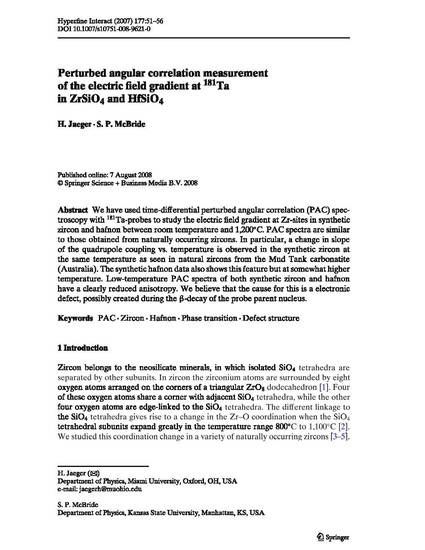
Article
Perturbed angular correlation measurement of the electric field gradient at 181Ta in ZrSiO4 and HfSiO4
Hyperfine Interactions
(2007)
Abstract
We have used time-differential perturbed angular correlation (PAC)spectroscopy with 181Ta-probes to study the electric field gradient at Zr-sites in synthetic zircon and hafnon between room temperature and 1,200◦C. PAC spectra are similar to those obtained from naturally occurring zircons. In particular, a change in slope of the quadrupole coupling vs. temperature is observed in the synthetic zircon at the same temperature as seen in natural zircons from the Mud Tank carbonatite (Australia).The synthetic hafnon data also shows this feature but at some what higher temperature. Low-temperature PAC spectra of both synthetic zircon and hafnon have a clearly reduced anisotropy. We believe that the cause for this is a electronic defect, possibly created during the β-decay of the probe parent nucleus.
Keywords
- PAC,
- Defect,
- Defect Structure,
- Phase Transistion
Disciplines
Publication Date
Summer June 7, 2007
Citation Information
Herbert Jaeger and Sean P. McBride. "Perturbed angular correlation measurement of the electric field gradient at 181Ta in ZrSiO4 and HfSiO4" Hyperfine Interactions Vol. 177 Iss. 1 (2007) p. 51 - 56 Available at: http://works.bepress.com/sean-mcbride/16/
